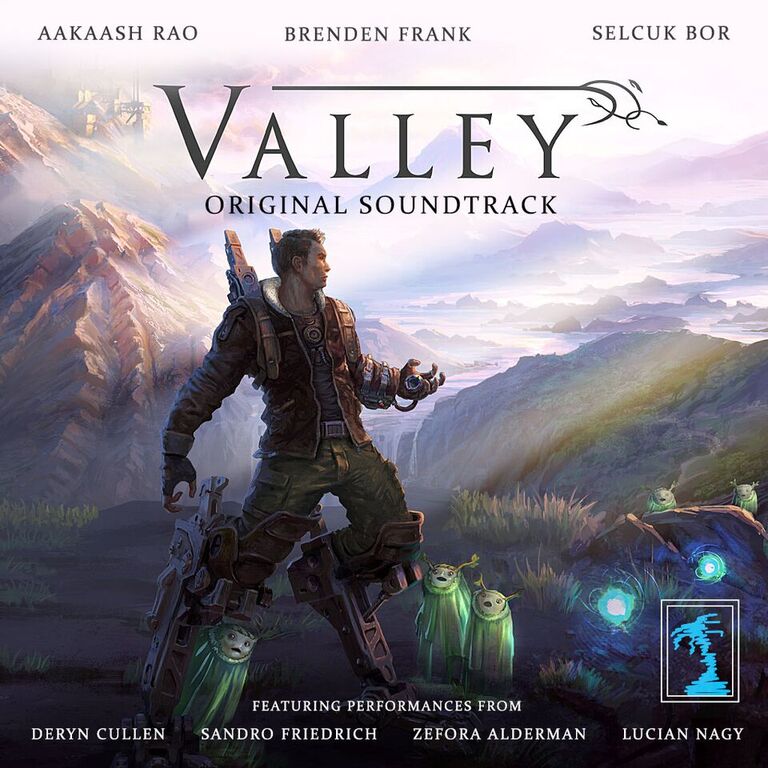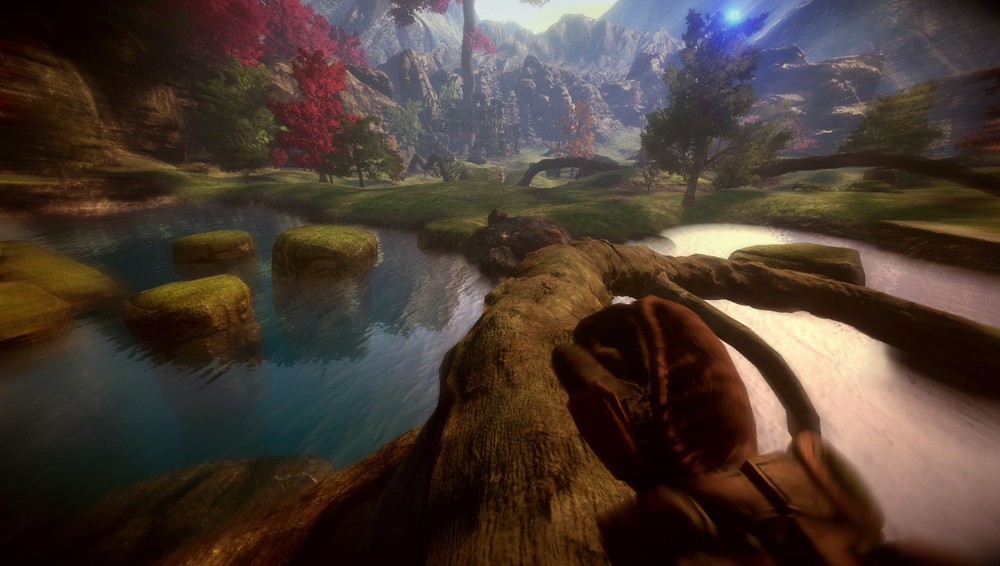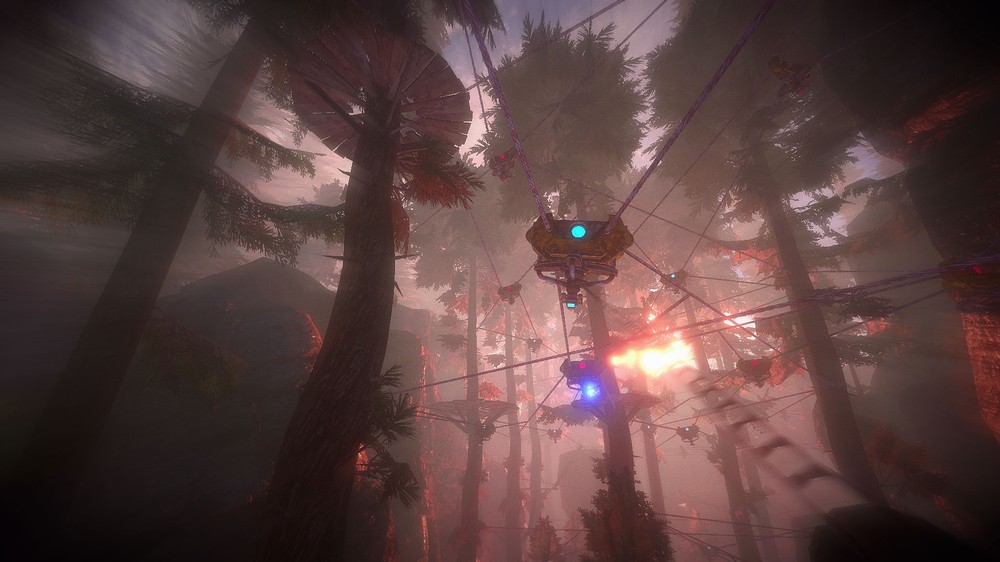“Explore the vast and beautiful world of Valley using the power of the L.E.A.F. suit: a fierce exoskeleton that grants exceptional speed and agility along with the phenomenal ability to manipulate the life and death of all living things.”
Experience the adventure of a lifetime
We recently reviewed the outstanding new adventure game, Valley, from Blue Isle Studios, and we couldn’t help but take notice of the amazing soundtrack composed by Aakaash Rao that truly enhanced this magical experience. We had the opportunity to ask him a few questions about creating this soundtrack, which is now available on Steam.
Q: Thank you for your time. Please get us started by introducing yourself and telling us about the team responsible for the music in Valley.
Thank you for reaching out! My name is Aakaash Rao, and I’m a game composer from the San Francisco Bay Area. I had the privilege to score Valley, developed by Toronto-based Blue Isle Studios for PC, PS4, and XBOX One. The soundtrack was a collaborative effort between Selcuk Bor, a sound designer and developer at Blue Isle; Brenden Frank, Blue Isle’s technical and audio director; and four fantastic session musicians.
Q: How is composing a score for a video game different from any other medium? Are there any particular concerns when the story/pacing is out of your control?
Before I started writing for video games, I primarily composed music for performance. One of the most important differences between the two genres is that game music has to be unobtrusive – it should enhance, rather than distract from, the experience of the game. I think it’s easy to forget how cognitively demanding listening to music can be, and the last thing that I want is for a player to be constantly switching his or her attention between the music and the gameplay.
That said, it’s also easy to go too far the other way and write the game equivalent of elevator music – bland, characterless tracks that contribute nothing to the experience. One of the most frustrating, yet ultimately most rewarding, aspects of game composition is striking a balance between these two extremes. And of course, that balance will differ depending on the game. Valley called for a largely ambient soundtrack; another game I’m working on, a 2.5D strategy game called Liege, has a lot more “space” for a more intimate, chamber-based OST.
To answer your question about story and pacing: especially given that the plot changes so often over the course of development, it can be difficult to establish melodic motifs for particular characters or places. One of my regrets about the Valley soundtrack is that I didn’t really have the chance to develop the three primary motifs (Virginia’s melody, the Valley melody, and the “recollections” melody) throughout the course of the game. A perceptive listener may catch them a few times, but they don’t contribute to the experience to the extent that I had envisioned.
Q: I spent much longer in some areas of the game than the designers probably ever intended yet the music never had any obvious loops or cuts. How do you design “minutes” of music that can work for “hours” of gameplay?
That’s a great question – we definitely spent a lot of time making sure the music wouldn’t become repetitive. There are two considerations: the composition itself and the implementation of the music in-game. Compositionally, I focused on making sure that there’s always a sense of movement, whether that comes from the percussion base or the string swells or the live instruments. I also tried to add enough variety within each loop that they don’t become too boring on the third or tenth or fiftieth repetition.
As for the technical implementation, I actually delivered to Blue Isle the project “stems” – the individual instrument tracks from the composition – which allowed them to mix and match the instruments that play on subsequent repetitions of the track. For example, the engine might play the full mix on the first loop, play only the strings, flute, and drums on the second loop, and then drop the strings but add in the xylophone and marimba on the second. This system helps keep the audio interesting on long playthroughs.
Q: So much of the music in Valley seems like a cinematic score with perfectly timed cues that sets the perfect mood. When you are creating these tracks are you getting your inspiration from concept art, gameplay videos, or something else?
Both concept art and gameplay videos were important inspirations, but I was fortunate enough to play a working build of the game almost from day one. As you pointed out in your review, Valley features some incredibly unique mechanics, and a lot of the melodies just popped into my head as I was jumping around in the LEAF suit or exploring the facilities. Another great source of inspiration was the work of the session musicians with whom I collaborated: woodwind players Sandro Friedrich and Lucian Nagy, cellist Deryn Cullen, and singer Zefora Alderman. Especially with Sandro and Lucian, who play dozens of instruments from all around the world, I’d hit on new ideas just by exploring the demos on their website.
Q: Before Valley one of my favorite adventure game soundtracks was Lost Eden composed by Stéphane Picq back in 1995 mostly due to the creative use of rare almost primitive instruments, choral chants and even some throat-singing. You’ve assembled a creative team of musicians and singers for this project. What challenges were there in collaborating on such an eclectic soundtrack while keeping all the individual parts sounding like part of the whole?
I think one of the most important steps to take when approaching a soundtrack of this scale is to intentionally limit your palette. You have to choose a couple of key instruments, a few important motifs and textures, otherwise the soundtrack is not going to be a cohesive whole. So I really did a lot of thinking before approaching each piece in terms of how it would fit with the rest of the soundtrack, what new elements it would bring to the table and what old ideas it would play off of.
The flute performances by Sandro and Lucian all tie in with the idea of speed and flight – the player’s actions – while the cello and vocal performances by Deryn and Zefora represent groundedness, nature, and stability – the valley in which the player moves. My hope is that by linking instruments, motifs, and styles to a particular concept – using them as much as possible when that concept comes to the forefront and, just as importantly, not using them when that concept isn’t as emphasized – I can tie all these diverse sources together.
Q: My favorite soundtracks are the ones that can create instant recall of the source material just by listening to the music. Is there a movie or video game soundtrack or moment within a soundtrack that creates perfect recall for you?
As clichéd as this answer is, I’d have to say the opera scene from FFVI. The scene itself is incredibly well done, but it’s even more extraordinary what Nobuo Uematsu was able to do with such limited hardware.
Q: What was your best or most unexpected surprise composing the soundtrack for Valley?
Valley is the most complex project I’ve ever undertaken. Some of the tracks, like Life Yet in these Metal Bones or Amrita, required a ridiculous amount of programming and tweaking before they started to sound half-decent, and it was always a surprise when after a week of banging my head against the wall, I’d come back to one of these pieces and actually like how it sounded. This would be doubly true when I’d send the piece off to one of the session musicians for recording and then implement their work for the first time – they did an absolutely fantastic job bringing the soundtrack to life.
Q: Thanks for taking the time to answer our questions. In closing, are there any upcoming projects of yours we should be looking forward to?
Thank you! I’m working on two other projects at the moment. Planet Explorers is an open-world voxel-based game in development by Pathea Games, set to release within the next month or so. Liege, which I’ve already mentioned, is a dark, story-driven strategy RPG. Now that Valley is out the door, though, I’m looking around for new projects — I’m particularly hoping to work on a fantasy or puzzle game next.














